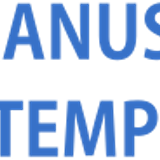Laboratory Study on The Use of Local Additive of Clam Shell in Water Based Mud
Abstract
The use of clam shells as additives in water-based mud has gained attention as a natural material in drilling fluids. This study tested the physical properties and rheology of water-based mud with varying amounts of clam shells. The density of the mud after adding clam shell additives was determined using a mud balance, and the rheology was tested using a viscometer. Filtration volume and mud cake thickness were also tested using an LPLT (Low-Pressure, Low-Temperature) filter press for 30 minutes. The pH measurement was performed from the filtrate volume. The results showed that adding varying amounts of clam shell additives increased the density by 8.7 ppg, 8.9 ppg, and 9 ppg, respectively. The filtration loss and mud cake produced were considered good, with filtration loss and mud cake being 13 mL and 1.6 mm, 12.2 mL and 1.4 mm, and 10.4 mL and 1.3 mm, respectively. Clam shell can be used as a fluid loss reducer because it can affect the viscosity value of the mud, resulting in a low filtration loss value. Proportional to filtration loss: if the filtrate comes out a little, the resulting mud cake is thinner.
Keywords
Full Text:
PDFReferences
Aboulrous A. A., Mahmoud, T., Alsabagh, A. M., Abdou, M. I., (2016). Application of nature polymers in engineering. In: Natural Polymers, pp 185 – 218.
Adams, N. J., & Adams, N. (1985). Drilling engineering: a complete well planning approach. Pennwell Corporation.
Agwu, O. E., Akpabio, J. U., & Akpabio, M. G. (2020). Potentials of waste seashells as additives in drilling muds and in oil well cements. Cleaner Engineering and Technology, 1, 100008.
Akeja, O. A., Akintola, S. A., Akpabio, J. U. (2014). The Use of Crassostrea Virginica as Lost Circulation Material in Water-Based Drilling Mud.
American Petroleum Institute. (2010). Specification For Drilling Fluid Material.
Avci, E., Szabo, T., Federer, G., (2019). Rheological performance of fly ash in inhibitive water-based drilling fluids. Petroleum & Coal 67, 1307 – 1313.
Bourgoyne, A. T., Millheim, K. K., Chenevert, M. E., & Young, F. S. (1986). Applied drilling engineering.
Bridges, S., & Robinson, L. (2020). A practical handbook for drilling fluids processing. Gulf Professional Publishing.
Chevron Texaco & BP. (2002). Drilling Fluid Manual.
Dhaffa, Farrel M. (2023). Studi Laboratorium Penggunaan Aditif Lokal Cangkang Kerang pada Water Based Mud. FTM UPN “Veteran” Yogyakarta
Halliburton Fluid Systems. (2006). Baroid Fluid Services Fluids Handbook.
Ing, D., & Prassl, W. F. (2003). Drilling Engineering. Curtin University of Technology, Kensington.
Kartini, R. (2014). Lumpur Berbasis Air Rendah Padatan dan Tahan Temperatur Tinggi Bagi Pemboran di Formasi Serpih. LPMGB, Vol. 48, No. 2, 111 – 118.
Khodja, M., Canselier, J. P., Bergaya, F., Fourar, K., Khodja, M., Cohaut, N., Benmounah, A. (2010a). Shale problems and water-based drilling fluid optimisation in the Hassi Messaoud Algerian oil field. Appl. Clay Sci. 49, 383 – 393.
Khodja, M., Khodja-Saber, M., Canselier, J. P., Cohaut, N., Bergaya, F. (2010b). Drilling Fluid Technology: Performances and Environmental Considerations. Products and Services; from R&D to Final Solutions, pp. 227 – 256.
Lertwattanaruk, P., Makul, N., & Siripattarapravat, C. (2012). Utilization of ground waste seashells in cement mortars for masonry and plastering. Journal of environmental management, 111, 133-141.
Melbouci, M., Sau, & A. C. (2008). Washington, DC: U.S. Patent and trademark office. U.S. Patent No. 7, 384 – 892.
Moghaddam A. K., Saadatabadi, A. R., (2020). Rheological modelling of water-based drilling fluids containing polymer/bentonite using generalized bracket formalism. J. Petrol. Sci. Eng. 189, 1 – 16.
Peng, C., Feng, W., Luo X., Li, S., Riji, C., (2009). An Environmentally Friendly Wbm System Can Prevent Hard Brittle Shale Instability. Scientific Contributions Oil & Gas, Vol. 32, No. 2, 133 – 142.
Suhascaryo, N., Wahyurini, E., Guntoro, Y. C., (2021). Utilization of Crude Oil as an Alternative Oil Base Mud Drilling Operation by “VICOIL” Standard Drilling Simulation Rig in MGTM Well UPN “Veteran” Yogyakarta Education Park Mineral Geotechnology Museum Field. Scientific Contributions Oil & Gas, Vol. 44, No. 2, 123 – 139.
DOI: https://doi.org/10.29017/SCOG.47.3.1635

This work is licensed under a Creative Commons Attribution-NonCommercial-NoDerivatives 4.0 International License.






